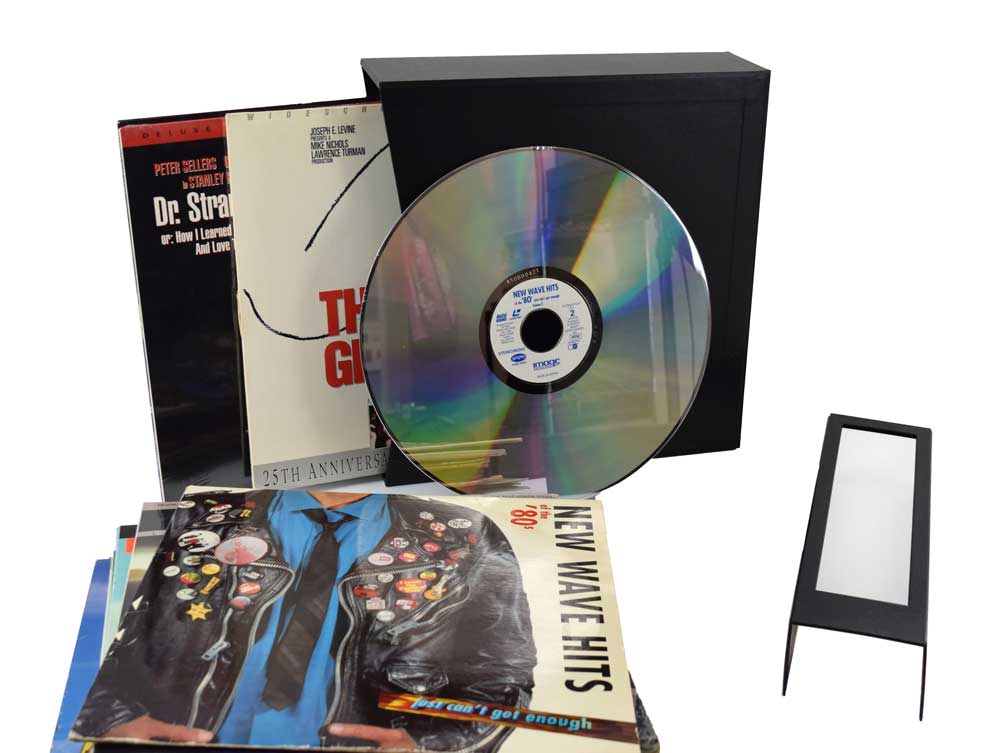
LaserDiscs: A Brief History
On December 11, 1978 the LaserDisc home video format was released to the public. It was the first optical disc storage medium to go on the market, and was the basis for future disc formats such as CDs, DVDs, and Blu-rays (we have Short Top Boxes for storing these formats). They were also called DiscoVision, LaserVision, and VLP (video long play).
LaserDisc did not catch on like its videotape competitors VHS and Betamax. LaserDiscs had superior visual and audio quality, but they were more expensive and could not record shows from your television. They were more popular in Japan and among cinephiles. The format reached it’s peak in the 1990s and by 2000 sales of new discs in North America had stopped. Pioneer stopped production of LaserDisc players in 2009.

Another drawback to the LaserDisc format was that you needed to flip the disc over part way through your movie. The discs contained about one hour of content per side. At the end of side one a turtle icon like the one above would appear telling the user to flip the disk over to continue watching.
Collecting LaserDiscs
As with most 20th century media, you can always find someone collecting it! Collecting LaserDiscs is a fairly inexpensive hobby, as you can buy them at records stores or online for $5 – $10 each. You can find a used LaserDisc player online for a few hundred dollars. Some people buy LaserDiscs to frame and display the large graphic covers.

LaserDiscs can degrade over time and it is referred to as disc rot. According to Wikipedia, disc rot is the tendency of optical discs to become unreadable because of chemical deterioration. The causes include oxidation of the reflective layer, reactions with contaminants, ultra-violet light damage, and de-bonding of the adhesive used to adhere the layers of the disc together. Some deterioration is the result of certain manufacturing practices.
Storing LaserDiscs
All media will eventually degrade, but you can slow down the process with proper storage techniques. Store LaserDiscs somewhere in your living space that is climate controlled and out of direct UV light. LaserDiscs have a 12 inch diameter just like a long playing vinyl record. That means their outer cardboard sleeves are the same dimensions and LaserDiscs fit nicely into our archival Vinyl Record Storage Box.

Do not store your LaserDiscs (or LPs) in a stack as seen above! They should be stored vertically and not packed too tightly together. Our Vinyl Record Storage Boxes are handmade in Rochester, NY of high-quality, acid-free, archival materials designed to protect your collection. About eighteen single discs will fit into one box.

The box is sturdy enough to be free standing on a credenza or it can be placed on a shelf. We sell resealable archival Crystal Clear Bags (86-1212) if you want an added layer of protection. Do not keep the original plastic shrink wrapper on your discs or records.

We designed the Vinyl Record Storage Box with room at the top and notches on the sides which make it easy to remove the contents. It will also accommodate box sets.
If you have any questions or comments you can contact us via phone or email.
